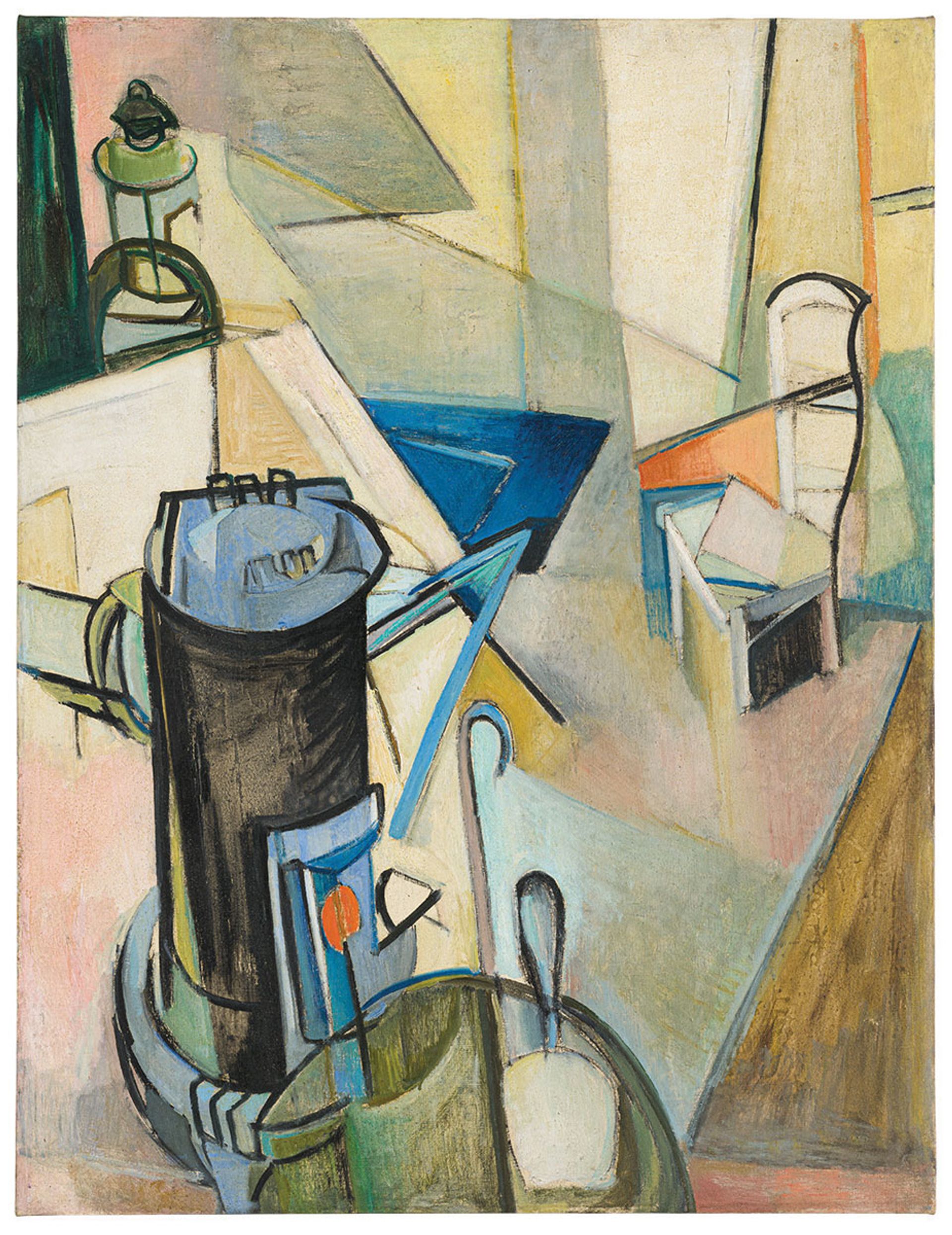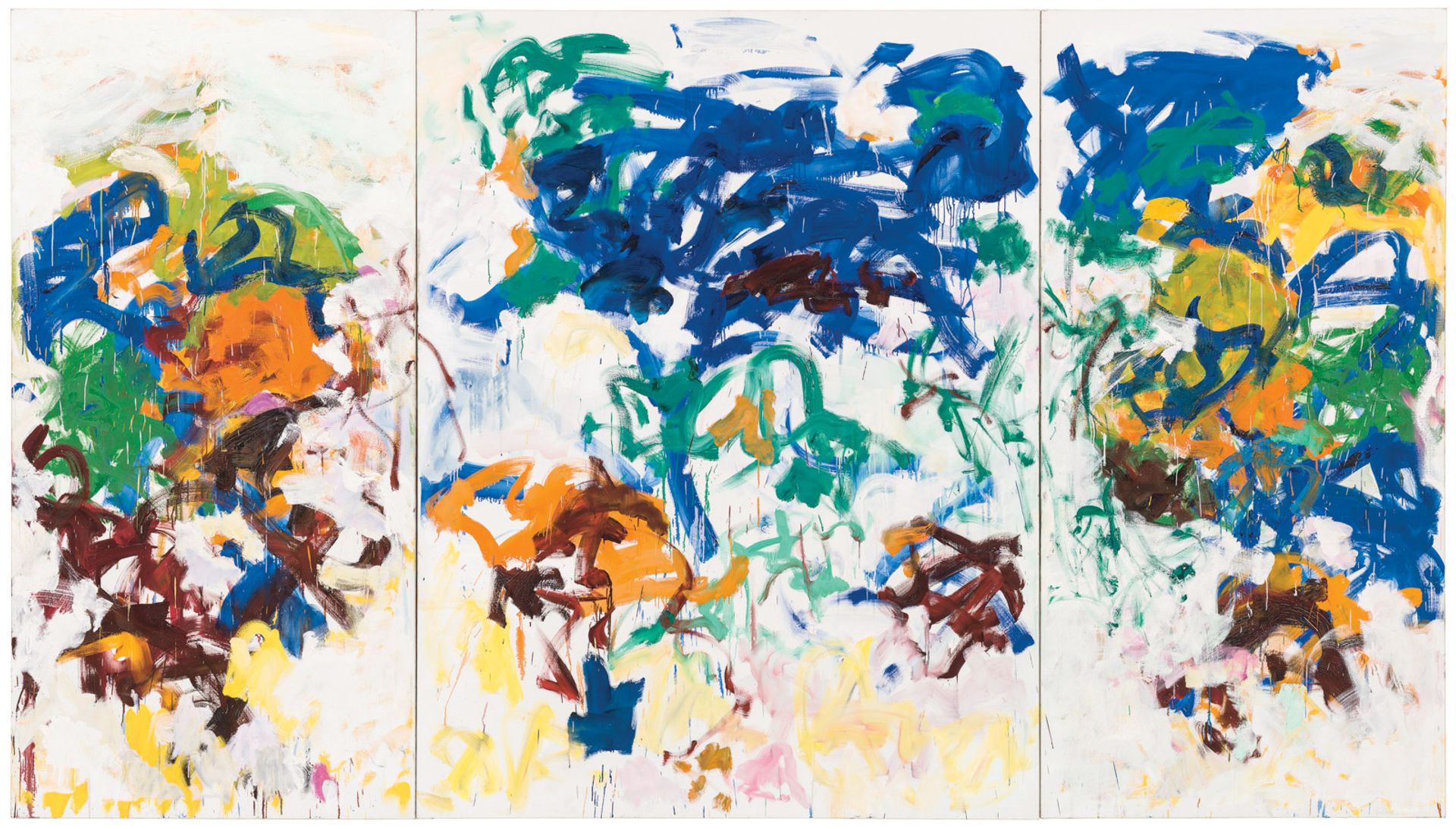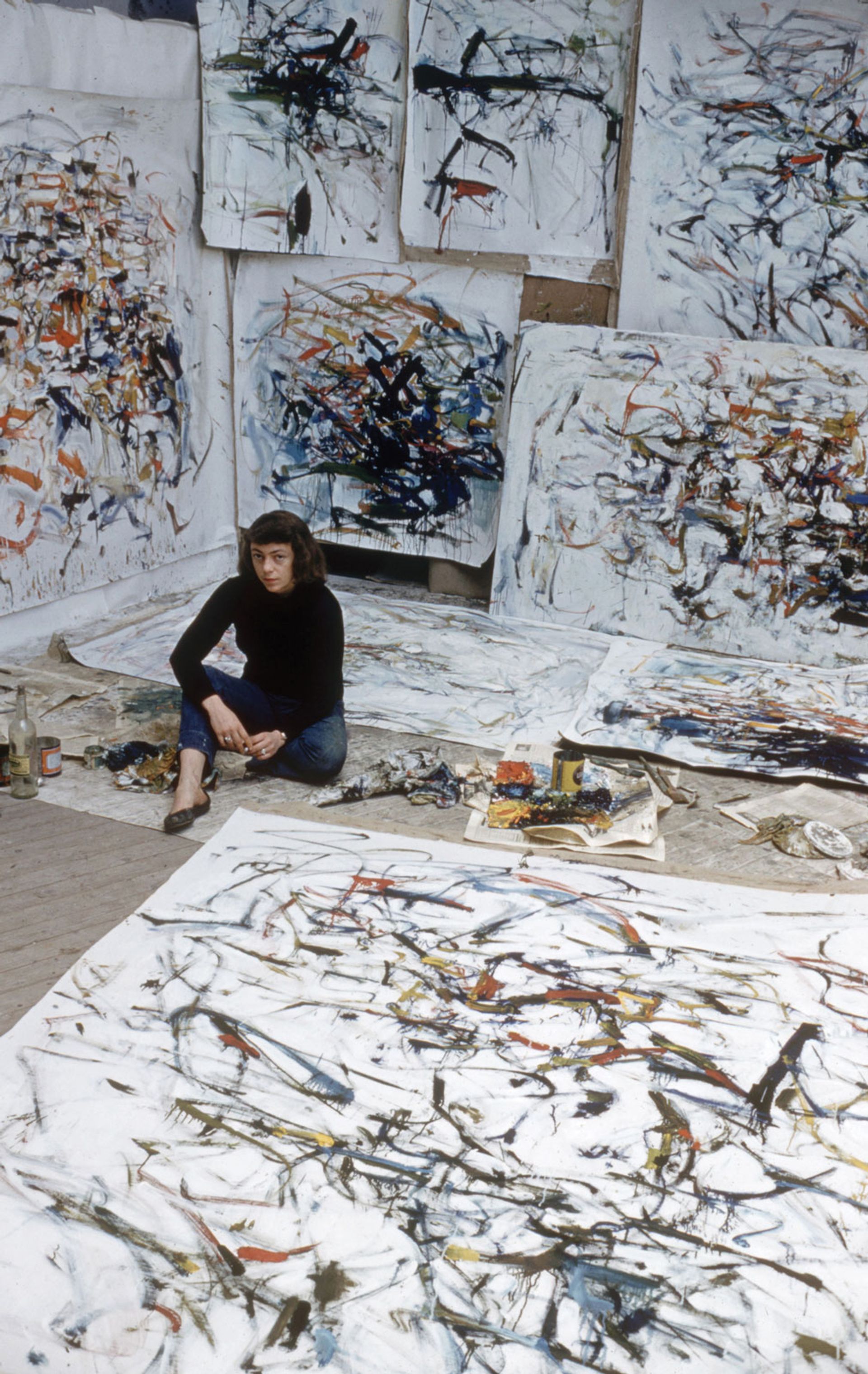Joan Mitchell (1925-92) pursued a long, successful painting career, chafing frequently under condescending rubrics such as “second-generation Abstract Expressionist” and “woman painter”. An 80-piece survey opening at the San Francisco Museum of Modern Art (SFMoMA) on 4 September, and later travelling to Baltimore and Paris, aims to dispel those belittling shadows and let us see Mitchell’s art clearly and whole.
“For those who know Mitchell’s work, or think they do, there will still be surprises,” says Katy Siegel, the Baltimore Museum of Art curator and exhibition co-organiser. They include “blockbuster paintings that haven’t been seen in decades, restored to their original context in a suite [and] little-known transitional paintings that fill in the blanks”. For those unfamiliar with Mitchell, the curators hope to show how she was “a woman who managed to make art the centre of her life and refused to let anyone tell her what being a woman meant—who sought tenderness, love, beauty, and also wielded athletic prowess and great ambition”.
“She followed her own instincts to create work that could be tough, even deliberately displeasing”Sarah Roberts, curator, SFMoMA
Born to wealth in Chicago, Mitchell grew up in a home frequented by poets and artists. Her mother was a published poet while her father was a medical professional, as well as an amateur painter, noted in Chicago social circles.
From an early age, Mitchell garnered an informal art education from the distinguished holdings of the Art Institute of Chicago, later passing through its degree programmes. But her first distinction came through sport, culminating in competitive figure skating at a national level. The later athleticism seen in her large, gestural paintings is the farthest thing from affectation. “Painting is a way of forgetting oneself,” she told an interviewer in 1986. “It’s like riding a bicycle with no hands... It’s a state of non-self-consciousness.”

Mitchell's Untitled (1948) © Estate of Joan Mitchell; photo: Kris Graves
Asked about her inspiration for the retrospective, the SFMoMA curator Sarah Roberts highlighted Bracket (1989), a triptych suggestive of a landscape with elements uprooted, tossed and suspended aloft. It is the largest and latest of six Mitchell works in the museum’s collection. “Spending extended time looking at Bracket convinced me of the complexity and significance of Mitchell’s work,” Roberts says. The curator adds that the show proposes that Mitchell’s abstract painting “has a singular capacity to convey personal perspective, embody the verbally inexpressible and speak directly to our shared experiences of the natural world. She followed her own highly developed instincts to create work that could be tough, even deliberately displeasing, as well as works that embraced lush beauty and colour in direct refutation of critics who might have labelled such works as decoration.”

The large-scale triptych Bracket (1989) was completed towards the end of Mitchell's career photo: Katherine Du Tiel; © Estate of Joan Mitchell
Mitchell moved to New York during the heyday of Abstract Expressionism. Her work gradually won the respect of already revered practitioners such as Willem de Kooning and Franz Kline, although she recalled decades later that during the 1950s she had never invited a male artist to her studio.
In 1955, Mitchell began shuttling between Paris and New York before making France her permanent home in 1959. Rooted in Paris at first, partly due to her turbulent involvement with the more successful French-Canadian painter Jean-Paul Riopelle, she eventually settled comfortably in the village of Vétheuil, where, though a frequent traveller, she would live out her career. “I think it would be easier to live the life of a painter here,” she told a correspondent soon after her initial relocation from New York, “the continual working and not showing for years—it’s accepted and has a dignity.” Later, in 1992, she added other reasons: “the landscapes, the bistros, everything you call quality of life”.

Joan Mitchell in her studio at 77 rue Daguerre in Paris in 1956 Photo: Loomis Dean/The LIFE Picture Collection/Shutterstock
Covid-19 has inevitably affected the planning of the show. However, Roberts says, “We are very fortunate that we did not experience any loss of loans from the checklist due to the pandemic.”
The catalogue is the most ambitious account of Mitchell’s art to appear in more than two decades; contributors include the writer Paul Auster, the poet Eileen Myles and the art historian Richard Shiff. Although it lacks some conventional research resources, such as a detailed career chronology and exhibition history, it takes poetry newly seriously as a spur to Mitchell’s creativity.
“Mitchell had absorbed certain formal elements of poetry,” writes Jenni Quilter in the catalogue, “namely, the genre’s ability to move rather than persuade... Shades of pause (line breaks, indents, stanza breaks) [that] make us better interpreters of what is generally understood as silence.” Quilter adds: “It seems no accident that Mitchell used white paint as distinctively as she did, creating space and light in ways comparable to a poet’s positioning of a line break.” It may be decades before such a rich survey of Mitchell’s pictorial poetics comes before the art public again—don’t miss it.
• Joan Mitchell, San Francisco Museum of Modern Art, 4 September-17 January 2022; Baltimore Museum of Art, 6 March-14 August 2022; Fondation Louis Vuitton, Paris, 5 October 2022-27 February 2023


